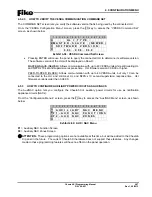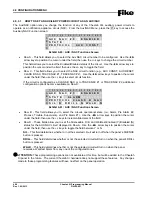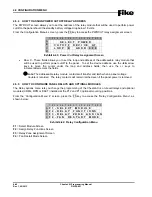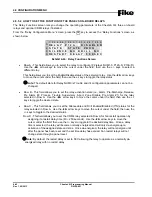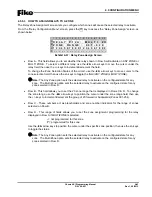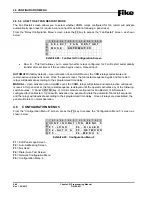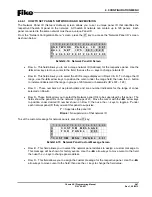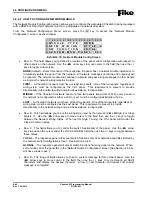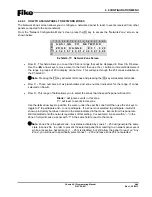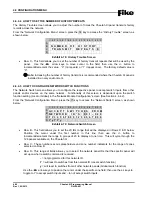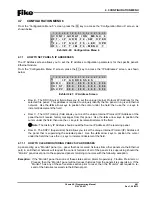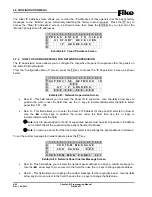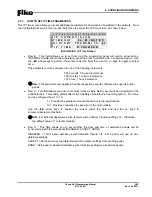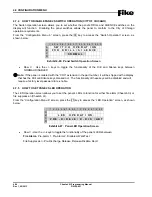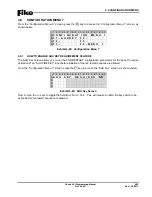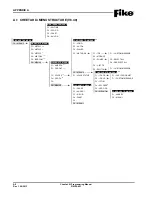
4.0 CONFIGURATION MENU
Cheetah Xi Programming Manual
4-51
P/N: 06-651
Rev 1, 09/2013
4.7
CONFIGURATION MENU 6
From the “Configuration Menu 5” screen, press the F6 key to access the “Configuration Menu 6” screen, as
shown below:
1 2 3 4 5 6 7 8 9 0 1 2 3 4 5 6 7 8 9 0
A
C O N F I G U R A T I O N
M E N U
6
B
F 1 - I P
A D R
F 4 - S W
O P E R
C
F 2 - I P
S U P
F 5 - L E D
O P R
D
F 3 - I P
T I M
F 6 - M E N U
7
Exhibit 4-80: Configuration Menu 6
4.7.1 HOW TO SET PANEL’S IP ADDRESSES
The IP Address screen allows you to set the IP address configuration parameters for the specific panel’s
Ethernet module.
From the “Configuration Menu 6” screen, press the F1 key to access the “IP Addresses” screen, as shown
below:
1 2 3 4 5 6 7 8 9 0 1 2 3 4 5 6 7 8 9 0
A
I P
A D D R E S S E S
B
S R C :
0 0 0 . 0 0 0 . 0 0 0 . 0 0 0
C
H I S T : 0 0 0 . 0 0 0 . 0 0 0 . 0 0 0
D
S U P V : 0 0 0 . 0 0 0 . 0 0 0 . 0 0 0
Exhibit 4-81: IP Address Screen
•
Row B - The SRC (Source) field allows you to set the unique Internet Protocol (IP) Address for the
selected fire panel. This address is required to uniquely identify the fire panel on a given Ethernet
network. Use the
◄►
arrow keys to position the cursor under the field; then use the +/- keys to
increment/decrement the field.
•
Row C - The HIST (History) field allows you to set the unique Internet Protocol (IP) Address of the
panel that will receive history messages from this panel. Use the
◄►
arrow keys to position the
cursor under the field; then use the +/- keys to increment/decrement the field.
L
Note:
The History IP Address should equal the Source IP Address of the receiving panel.
•
Row D - The SUPV (Supervision) field allows you to set the unique Internet Protocol (IP) Address of
the panel that is supervising the selected panel. Use the
◄►
arrow keys to position the cursor
under the field; then use the +/- keys to increment/decrement the field.
4.7.1.1 HOW TO CLEAR MONITORING PANEL’S IP ADDRESSES
A panel acting as a “Monitor” panel (i.e., panel that has received histories from other panels via the Ethernet
port) in an Ethernet network will request the current histories of all of the panels it is supervising should the
“Monitor” panel reset prior to the supervised panels returning to normal, with the following exception:
Exception:
If the “Monitor” panel has none of these states active; Alarm, Supervisory, Trouble, Pre-Alarm, or
Process, then the “Monitor” panel will not request histories from the panels it is supervising. If the
“Monitor” has any of these five states active prior to reset, then the “Monitor” will request a re-
send of the histories received via the Ethernet port.
Summary of Contents for 10-068
Page 111: ......

